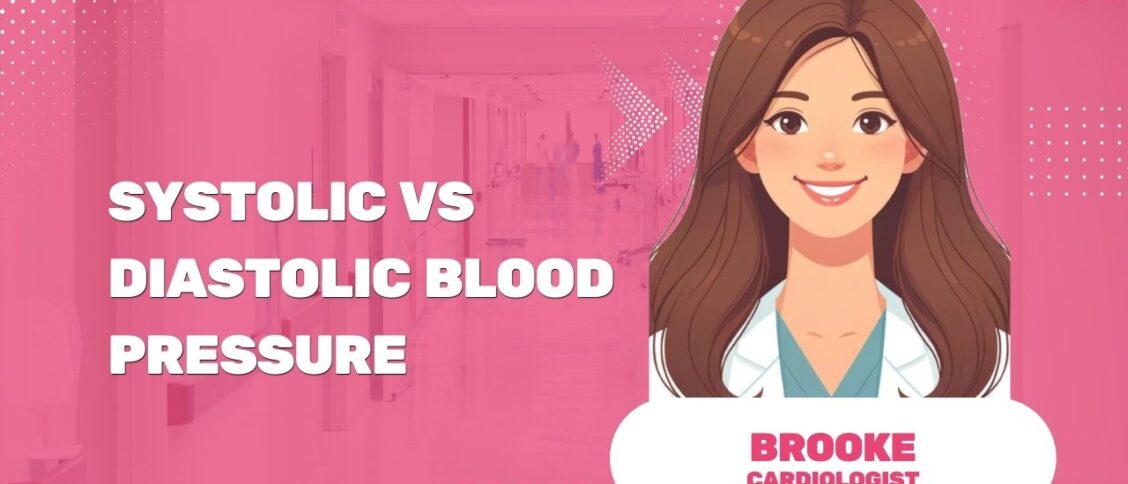Blood pressure readings are a crucial part of our health checks, yet many of us don’t fully understand what the numbers mean. We often hear terms like ‘systolic’ and ‘diastolic’, but what do they really signify?
Systolic and diastolic pressures represent different aspects of your heart’s function. The systolic number measures the pressure in your arteries when your heart beats, while the diastolic number gauges the pressure when your heart is at rest.
In this article, I’ll delve into the intricacies of systolic vs diastolic blood pressure. We’ll explore why both numbers are important and how they contribute to your overall cardiovascular health. So, let’s demystify these medical terms and help you make sense of your blood pressure readings.
What is systolic blood pressure number?
Systolic blood pressure number, the term not only sounds complex but plays a key role in our cardiovascular health. While your heart beats, it generates a pressure that propels blood through your arteries, this is your systolic blood pressure. Measured in millimeters of mercury (mm Hg), it’s the top or first number in blood pressure readings. Let’s dig into low and high systolic readings, and a unique condition called isolated systolic hypertension.
What is Low Systolic Blood Pressure?
Low systolic blood pressure, often referred to as hypotension, normally displays as a reading below 90 mm Hg. Although deemed as beneficial in the prevention of serious heart conditions like heart attacks and strokes, there’s a flip side. When it’s too low, it may cause inadequate blood flow to vital organs like your heart and brain. So how does one keep track? You’ve got to use a blood pressure monitor. These handy devices tell you if you’re in the healthy range or not and are essential for maintaining optimal health.
What is High Systolic Blood Pressure?
Conversely, high systolic blood pressure, or hypertension, typically presents with a reading above 130 mm Hg. If unchecked, it can lead to severe cardiovascular diseases like heart attacks and strokes. It’s why checking blood pressure regularly, especially if you’re above 40 or predisposed due to family history, is crucial.
What is Isolated Systolic Hypertension?
We’ve discussed low and high systolic blood pressure, but it’s equally important to understand isolated systolic hypertension. Here, the individual has elevated systolic pressure (over 130 mm Hg) but normal diastolic pressure (under 80 mm Hg). It occurs more in older adults due to age-related artery stiffening. Just as with hypertension, one must monitor this condition meticulously to avoid possible complications.
It’s crucial to remember that both high and low systolic readings indicate imbalances that need attention. Ultimately, the goal should be maintaining a healthy lifestyle that aids in lowering blood pressure. That includes a balanced diet, regular exercise, no smoking, and moderating alcohol intake. Regular check-ups and monitoring should not be neglected either. It’s a small price to pay for keeping the heart – our most vital organ – healthy and robust.
What is diastolic blood pressure number?
Diastolic blood pressure number symbolizes the force or strain against the arteries as the heart relaxes and refills with blood. It’s the lower digit in a blood pressure reading, inherently crucial in elucidating one’s overall cardiovascular health.
Just as your systolic blood pressure number, there’s a ‘normal’ range for diastolic too. Charting these numbers using a blood pressure monitor can give a clear, visual interpretation.
What is Low Diastolic Blood Pressure?
Low diastolic blood pressure, also known as diastolic hypotension, is when the blood pressure drops below the average lower limit of 60 mmHg. Some indicators of low diastolic blood pressure might include:
- Dizziness or lightheadedness
- Fainting (syncope)
- Lack of concentration
- Blurred vision
- Nausea
- Fatigue
- Rapid, shallow breathing (hyperventilation)
While this isn’t typically alarming, it’s always best to check your blood pressure regularly. A whopping 40 of adults aged 25 and over had been diagnosed with hypertension in 2008. That’s 1.39 billion people worldwide! So don’t forget to keep monitoring and maintaining.
What is High Diastolic Blood Pressure?
On the other hand, high diastolic blood pressure, or diastolic hypertension, is when the number climbs over 80 mmHg. As the heart relaxes, more force is being demanded against the arteries, causing them to narrow. This could lead to irreparable heart damage if left aged.
You might want to consider some lowering blood pressure practices. It’s not as daunting as it sounds. Simple habits like increasing cardiovascular activities and reducing salt intake can do wonders.
What is Isolated Diastolic Hypertension?
A less discussed, but equally important aspect of blood pressure health is Isolated Diastolic Hypertension (IDH). This is a condition in which the diastolic pressure, but not systolic, extends beyond the normal realm.
While a common perception might suggest a high systolic as worse, an elevated diastolic pressure could lead to similar risks, especially in individuals younger than 50 years. Proper management of IDH can aid in warding off severe health implications in the future.
Remember, health is a lifelong journey; it’s all about** understanding blood pressure ranges** and keeping tabs on them. A mindful lifestyle and regular medical checkup can go a long way in keeping blood pressure worries at bay.
What is the difference between systolic and diastolic blood pressure?
Understanding the difference between systolic and diastolic blood pressure begins with recognizing that these two measurements play distinct roles in your cardiovascular health. They’re more than just numbers on a blood pressure chart, they are key indicators of how effectively your heart and arteries are functioning.
Which Number is More Important: Systolic or Diastolic?
There’s a common question of whether the systolic (upper) number or the diastolic (lower) number is of greater importance. The answer isn’t as clear-cut as you might expect. While it’s an oversimplification to say one is more significant than the other, generally systolic pressure is given more attention, particularly in people over the age of 50. This is because the risk of heart disease and stroke has been found to be higher with increased systolic pressure.
However, that doesn’t mean the diastolic number isn’t critical. Diastolic pressure is particularly monitored in younger people. Elevated diastolic blood pressure can lead to diastolic hypertension. In any case, both numbers should be within a healthy range to ensure overall cardiovascular wellbeing.
How Can Lifestyle Changes Impact Systolic and Diastolic Blood Pressure?
Lifestyle plays a vital role in controlling your blood pressure. By adopting certain healthy habits, you can not only reduce your risk of hypertension but also potentially lower your blood pressure if it’s already high. Here are few ways to positively impact both your systolic and diastolic blood pressure:
- Healthy Diet: Following a diet rich in whole grains, fruits, vegetables and low-fat dairy products can lower your blood pressure.
- Regular Exercise: Engaging in regular physical activity can help you maintain a healthy weight and lower your blood pressure.
- Limit Alcohol: Drinking alcohol in moderation, if at all, can prevent blood pressure from rising.
- Quit Smoking: Each cigarette raises your blood pressure for several minutes after you finish. Quitting can help restore your blood pressure to a healthy range.
Can Medication Affect Systolic and Diastolic Blood Pressure?
Yes, medication can significantly affect your systolic and diastolic readings. Many people with high blood pressure often need medication alongside lifestyle changes to reduce their levels. Common prescriptions include diuretics, beta-blockers, and ACE inhibitors. However, all medicines have side effects, and blood pressure medication is no different. Under a healthcare professional’s guidance, it’s crucial to find a balance between managing blood pressure levels efficiently and keeping side effects to a minimum.
Regular checkups and using a good quality blood pressure monitor at home can help to keep track of your blood pressure readings. Remember, maintaining a balanced blood pressure is not a one-off process, it’s a lifestyle! Advocating for your heart’s health doesn’t end here, stay tuned to know more about hypertension, its symptoms, and possible solutions.
How to take blood pressure?
Understanding your blood pressure readings begins with taking accurate measurements. So, let’s dive right into it!
How to Improve Blood Pressure Reading Accuracy?
Beyond having a good quality blood pressure monitor, there are several other key considerations to improve the accuracy of your blood pressure readings:
- Don’t drink caffeinated or alcoholic beverages, or smoke, 30 minutes before taking your blood pressure.
- Utilize the correct cuff size for your arm.
- Always ensure that your arm is at heart level when taking a reading.
- Relax for at least five minutes before checking your blood pressure.
What Time of the Day Should You Take Blood Pressure?
Your blood pressure isn’t constant: it changes throughout the day. For consistency, try to measure your blood pressure at the same times each day. Early morning and evening are often recommended, but do check with your healthcare provider for specific recommendations.
What is the Best Home Blood Pressure Monitor?
Selecting the best home blood pressure monitor can seem daunting with so many options available. Accurate readings and ease of use should drive your decision. Devices that measure blood pressure at your upper arm are usually the most accurate. Brands like Omron and A&D have been endorsed by medical experts for their accuracy and reliability.
What Does Your Blood Pressure Reading Mean?
You’ve taken your reading – well done! But what exactly does it mean? That’s where a blood pressure chart comes into play. These charts provide an overview of what numbers are considered normal, high, or low blood pressure ranges. For example:
| Blood Pressure Ranges | Systolic (mm Hg) | Diastolic (mm Hg) |
|---|---|---|
| Normal | Less than 120 | Less than 80 |
| Elevated | 120-129 | Less than 80 |
| High Blood Pressure | 130+ | 80+ |
| Hypertensive Crisis | 180+ | 120+ |
Remember, both systolic and diastolic pressures are critical for a wholesome understanding of your cardiovascular health.
Taking accurate and regular blood pressure readings can aid in early detection and even prevention of health issues. Still, they’re not a substitute for regular doctor visits. So, ensure you are not missing out on those. Monitoring blood pressure goes beyond the numbers – it includes understanding them, taking steps for lowering blood pressure if necessary, and maintaining a lifestyle that supports cardiovascular health.
Final words
So there you have it. It’s clear that understanding your blood pressure readings, including systolic and diastolic values, is a vital part of maintaining heart health. Regular self-monitoring, using a reliable home monitor, can significantly aid in this understanding. But remember, it’s not a substitute for regular check-ups with your doctor. Use a blood pressure chart to interpret your readings and know when to seek medical advice. By staying informed and proactive, you’re taking a crucial step towards ensuring your cardiovascular wellbeing. Keep up the good work and keep your heart healthy!







